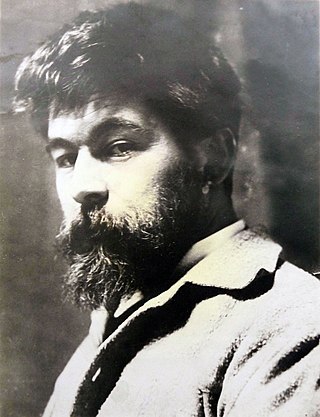This article needs additional citations for verification .(October 2015) |



Carl Wilhelm Hugo Schnars-Alquist (29 October 1855 in Hamburg - 20 August 1939 in Hamburg) was a German art collector and painter of maritime scenes.
This article needs additional citations for verification .(October 2015) |



Carl Wilhelm Hugo Schnars-Alquist (29 October 1855 in Hamburg - 20 August 1939 in Hamburg) was a German art collector and painter of maritime scenes.
Schnars-Alquist was the son of a merchant and himself first a merchant.
Schnars-Alquist formed a trade school in his native city in drawing and painting. Due to the success of different seascapes, which immediately found buyers, he became about 1884 and 1886 a student of Hans Gude at the Prussian Academy of Arts in Berlin. In 1888-89 he was a delegate of the German art association and a member of the jury at the world exhibition in Melbourne, founded in 1891 by Max Liebermann, Walter Leistikow and others the "union of the XI". In 1892-93 he was a member of the Reich Commission, a member of the Jury in Chicago, and in 1896 was appointed professor and moved back from Berlin to Hamburg. He was also a member of the Hamburg association of artists.
His numerous voyages to North, Central and South America, Australia, Tasmania, New Zealand, Ceylon, northern and southern Europe taught him to describe the sea under all latitudes, in all seasons and in all moods. His works were owned by the German Emperor Wilhelm II. (Help in sight, 1890), the Chancellor Bernhard von Bülow (Germany, 1900), the Kunsthalle Hamburg (West, 1903), the museums in Elbing, Adelaide, St. Louis and many private collections in Germany, America, Australia etc. He also painted many pictures of the steamers of the Hamburg-America Line.
In 1893, Schnars-Alquist was the German delegate for the fine arts at the World's Columbian Exposition. [1]

The World's Columbian Exposition, also known as the Chicago World's Fair, was a world's fair held in Chicago from May 5 to October 31, 1893, to celebrate the 400th anniversary of Christopher Columbus's arrival in the New World in 1492. The centerpiece of the Fair, held in Jackson Park, was a large water pool representing the voyage that Columbus took to the New World. Chicago won the right to host the fair over several competing cities, including New York City; Washington, D.C.; and St. Louis. The exposition was an influential social and cultural event and had a profound effect on American architecture, the arts, American industrial optimism, and Chicago's image.

Anton Alexander von Werner was a German painter and illustrator, best known for his depictions of the Franco-Prussian War and the Unification of Germany, typical of the Naturalist style. Member of the Akademie der Künste from 1874, Werner was a favourite of all the three German Emperors, William I, Frederick III, and Wilhelm II.

Josef Block was a German painter.

Willy Stöwer was a German artist, illustrator, and author during the Imperial Period. He is best known for nautical paintings and lithographs. Many of his works depict historical maritime events such as the sinking of the RMS Titanic in 1912.
Patrick von Kalckreuth (1892–1970), born Patrick Dunbar, was a leading German maritime painter.
Gaston Bodart (1867–1940) was a military historian, statistician, and government official. He was born in 1867 in Vienna, Austria. He achieved distinction for his analysis of casualties of war in Austria's wars, from the Thirty Years War to the Russo-Japanese War in 1905 and for many years his studies of military casualties remained the standard in the literature. As an assistant commissioner of the Imperial and Royal Commission, he also helped to organize Austria's presentations at various world fairs and exhibitions.

Otto Lessing was a prominent German Historicist sculptor whose work largely shaped the appearance of Berlin in the late 19th and early 20th centuries. He was the son of history and landscape painter Carl Friedrich Lessing and the great great nephew of poet Gotthold Ephraim Lessing.

Molly Cramer was a German flower, landscape and portrait painter. Trained in the old Dutch tradition, she turned to Impressionism in her later years.

The Munich Secession was an association of visual artists who broke away from the mainstream Munich Artists' Association in 1892, to promote and defend their art in the face of what they considered official paternalism and its conservative policies. They acted as a form of cooperative, using their influence to assure their economic survival and obtain commissions. In 1901, the association split again when some dissatisfied members formed the group Phalanx. Another split occurred in 1913, with the founding of the New Munich Secession.

Dora Hitz was a Court Painter to the Romanian Royal Family, a member of the November Group and co-founder of the Berlin Secession.

Hugo Vogel was a German painter, known primarily for historical scenes and portraits.

Christian Ludwig Bokelmann was a German genre painter in the Realistic and Naturalistic styles; associated with the Düsseldorfer Malerschule.

Helene Cramer was a German flower, landscape and portrait painter.

Bertha Mathilde Müller was an Austrian portrait painter.

Marie von Keudell (1838–1918) was a German painter known for her landscape painting.

Ascan Lutteroth was a German landscape painter; associated with the Düsseldorfer Malerschule.

Hermann Heinrich Becker was a German painter, art historian, author and writer.

Otto Stichling was a German sculptor in the Art Nouveau style.

Nikolaus Friedrich was a German sculptor.

Ernst Max Pietschmann was a German Symbolist painter.
German language sources:
![]() Media related to Hugo Schnars-Alquist at Wikimedia Commons
Media related to Hugo Schnars-Alquist at Wikimedia Commons